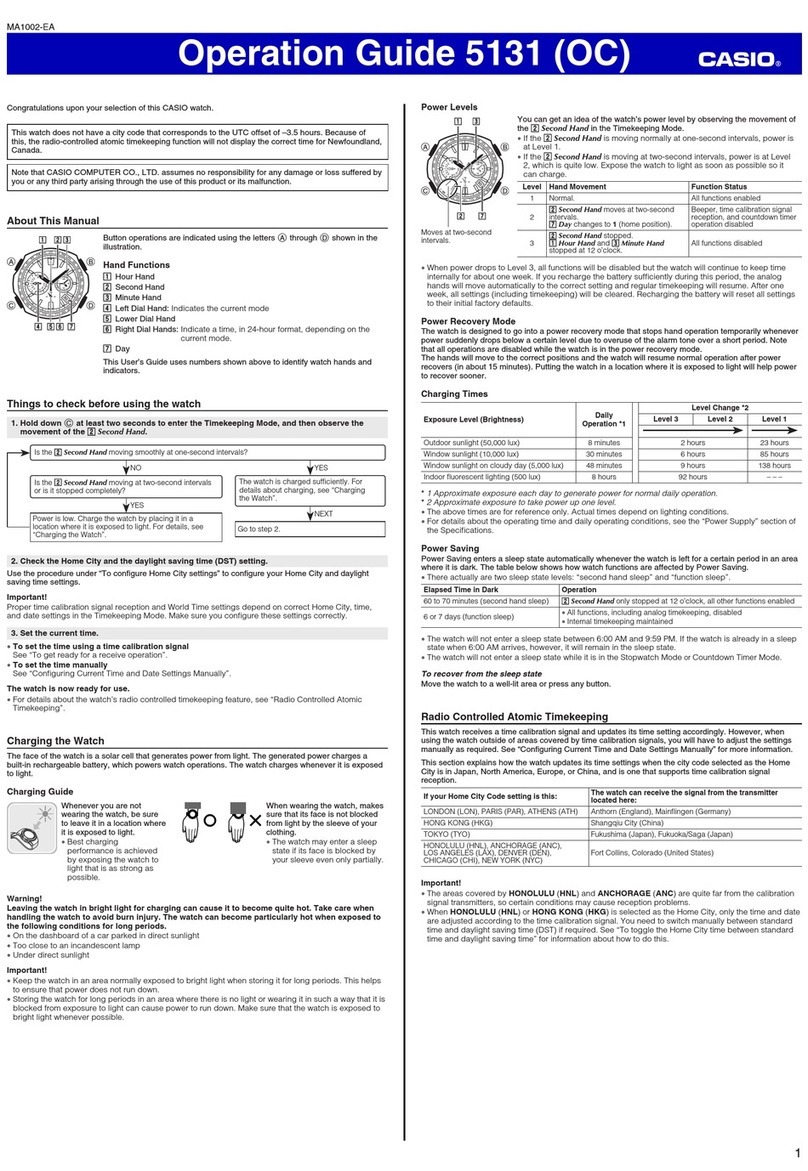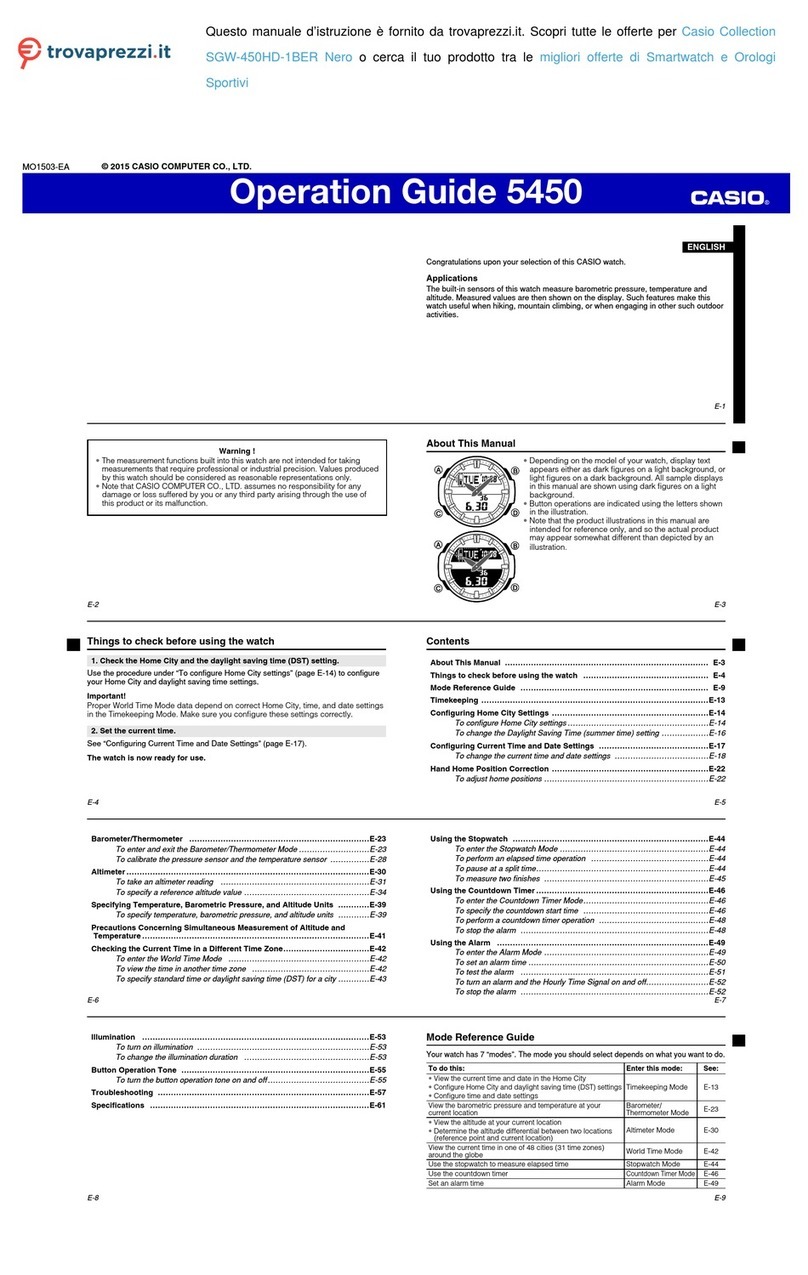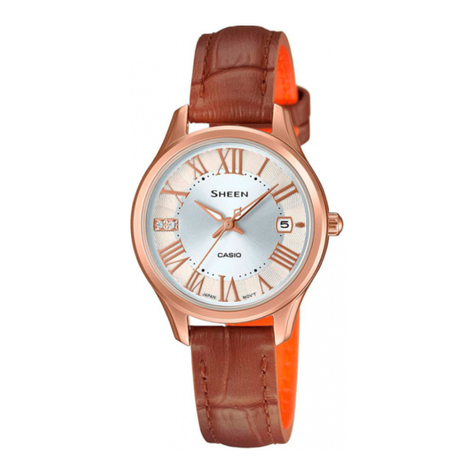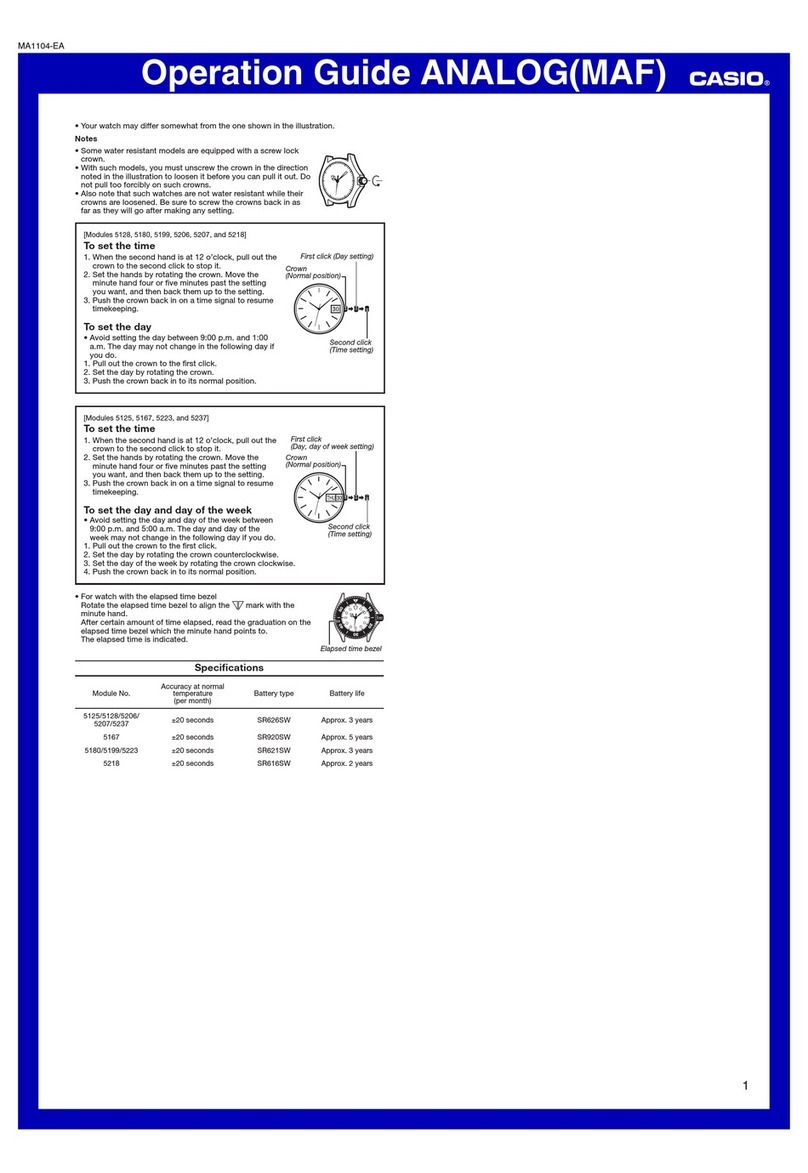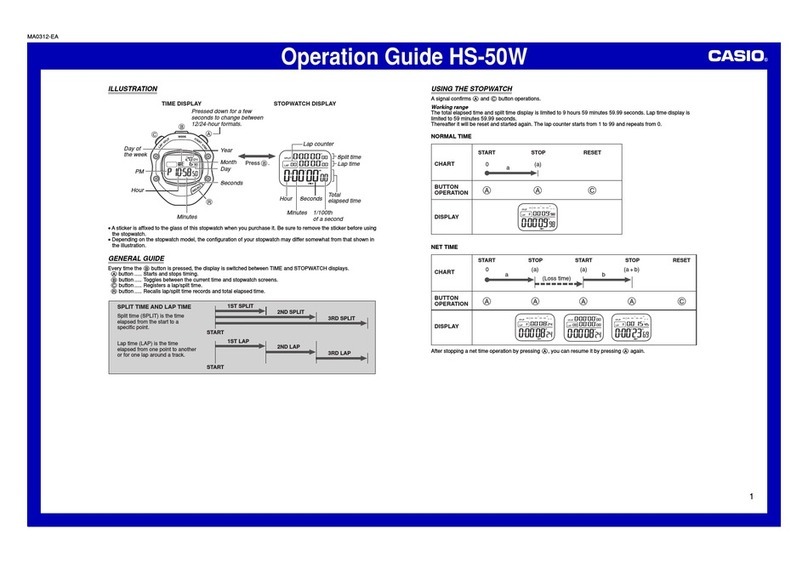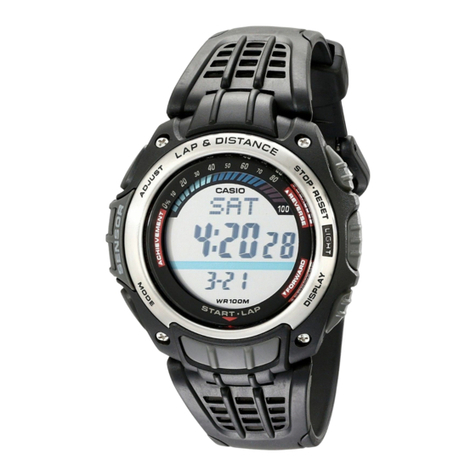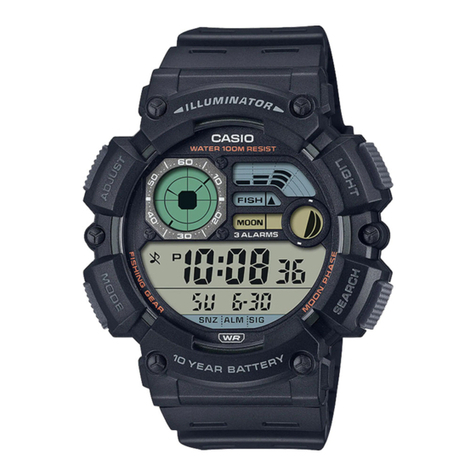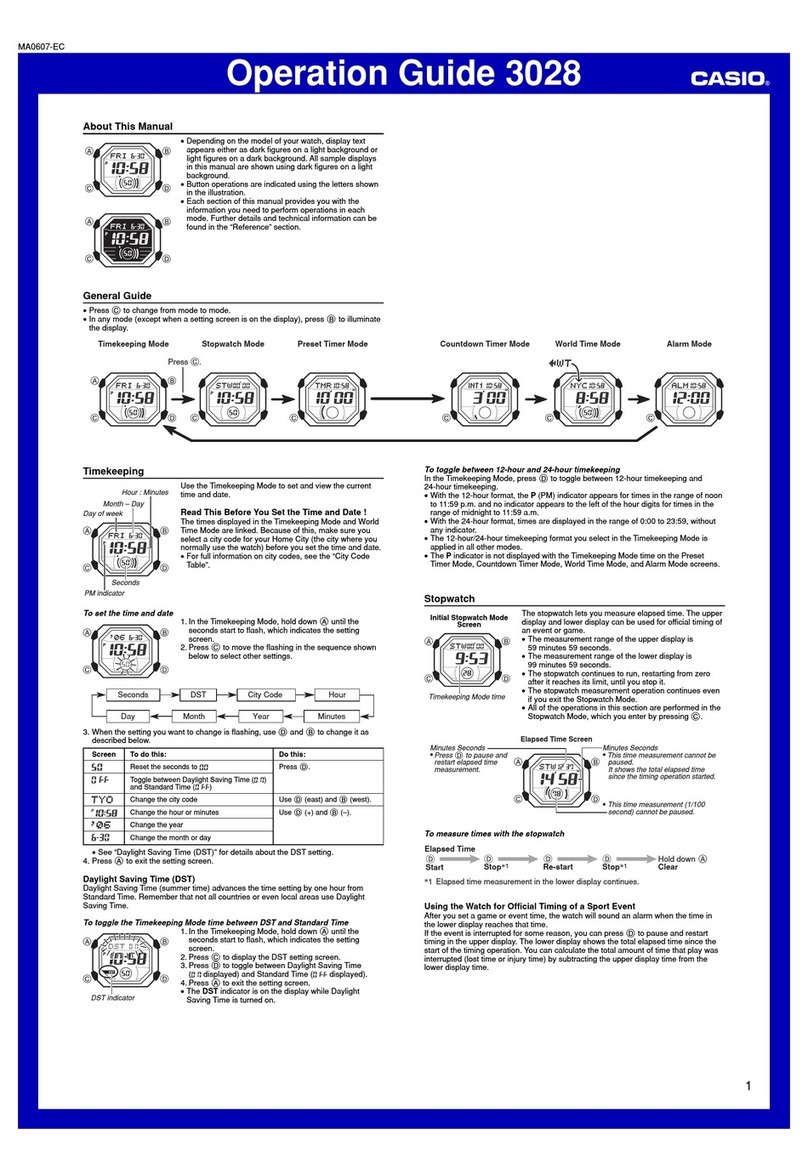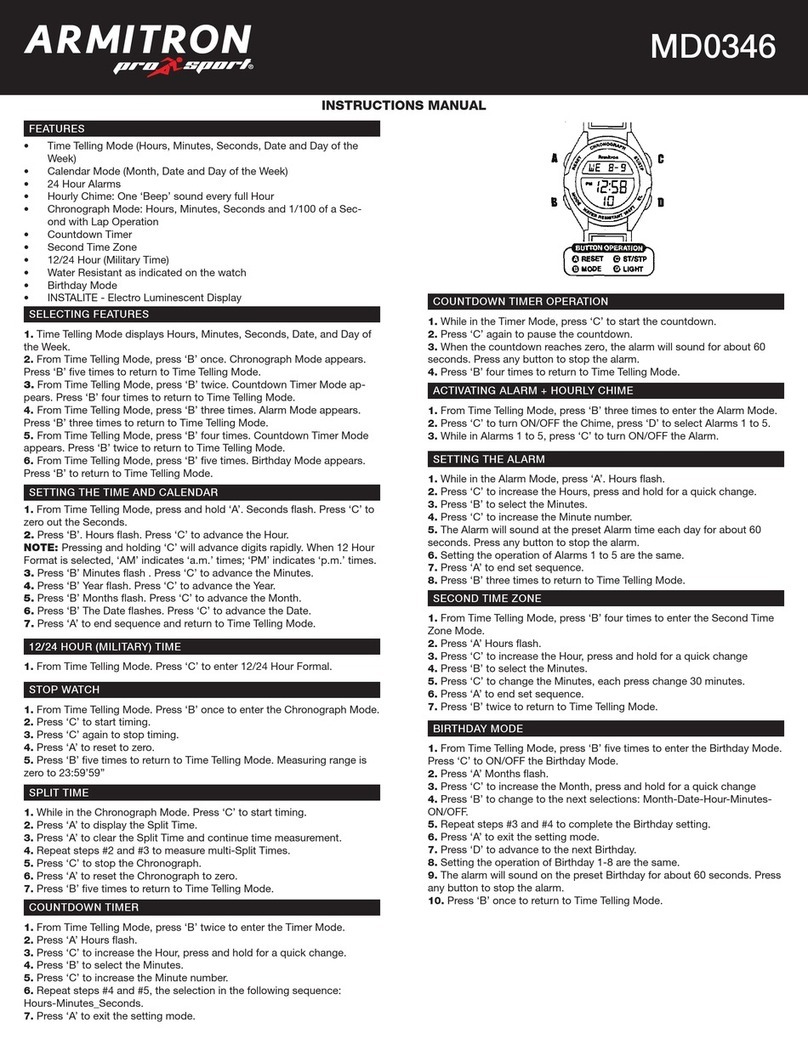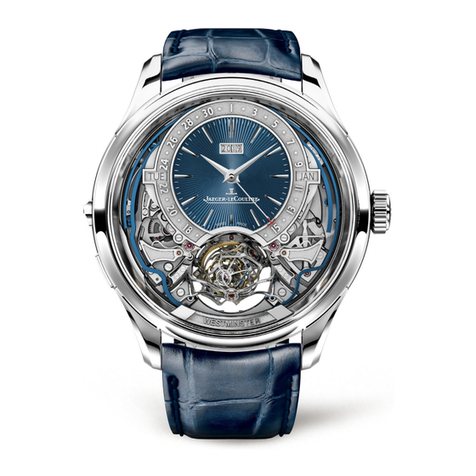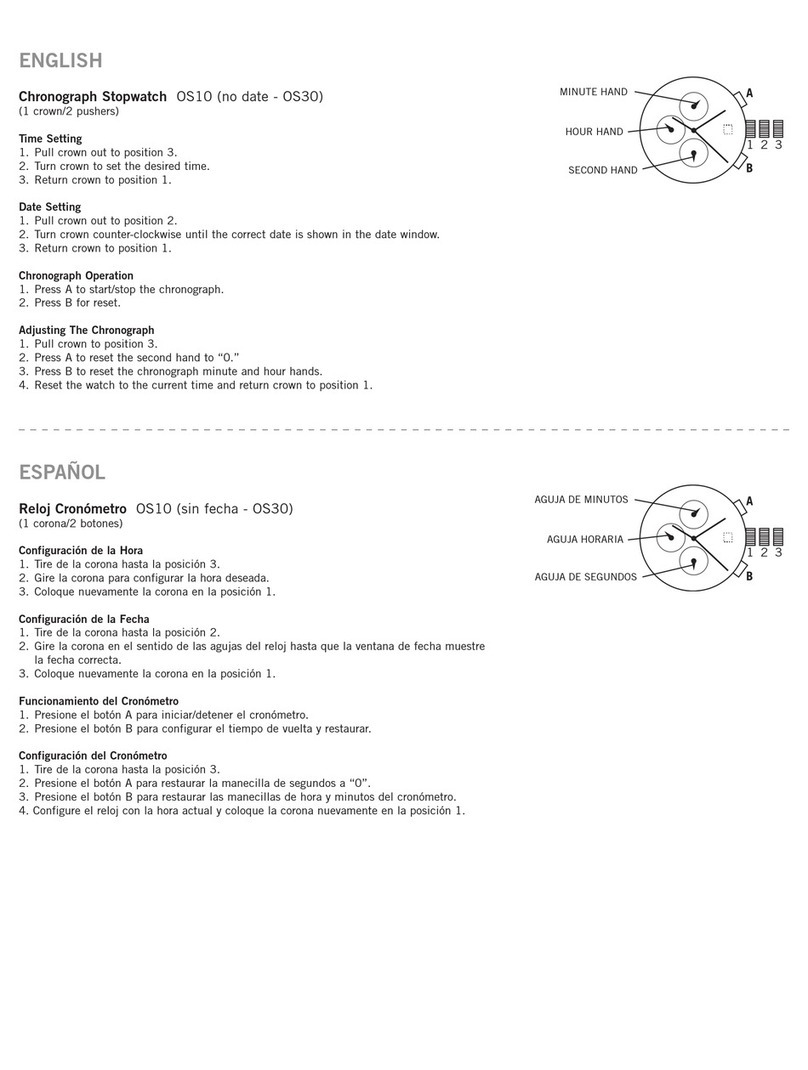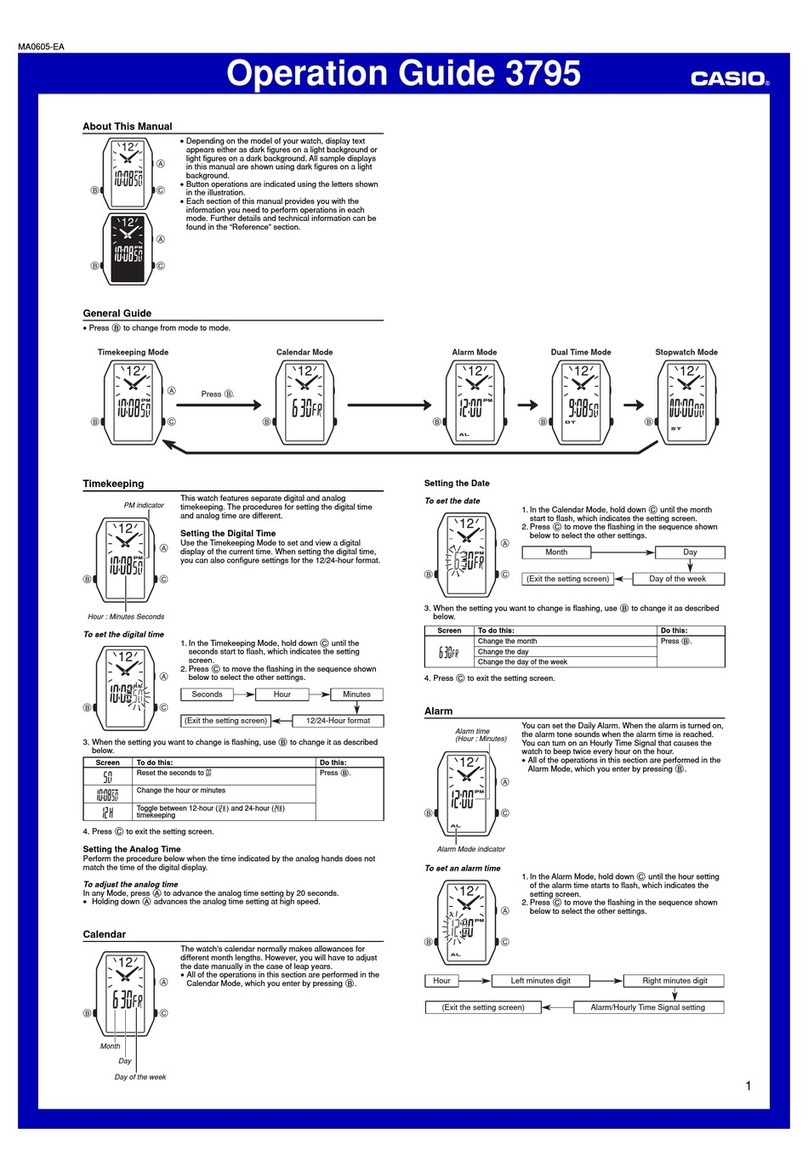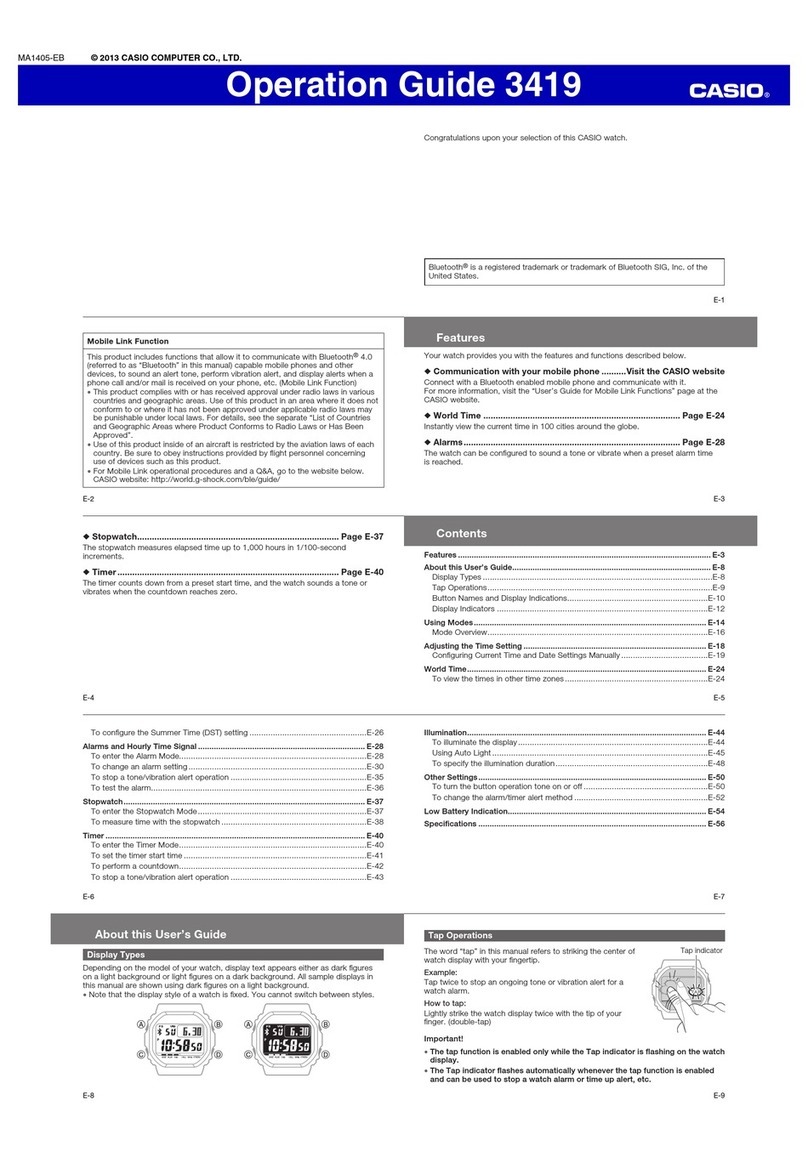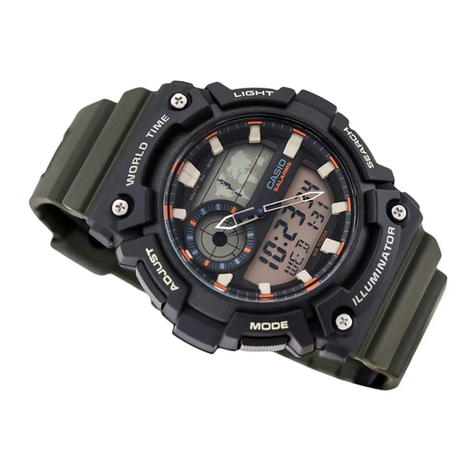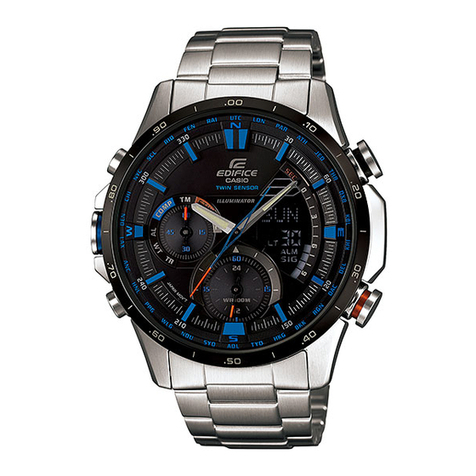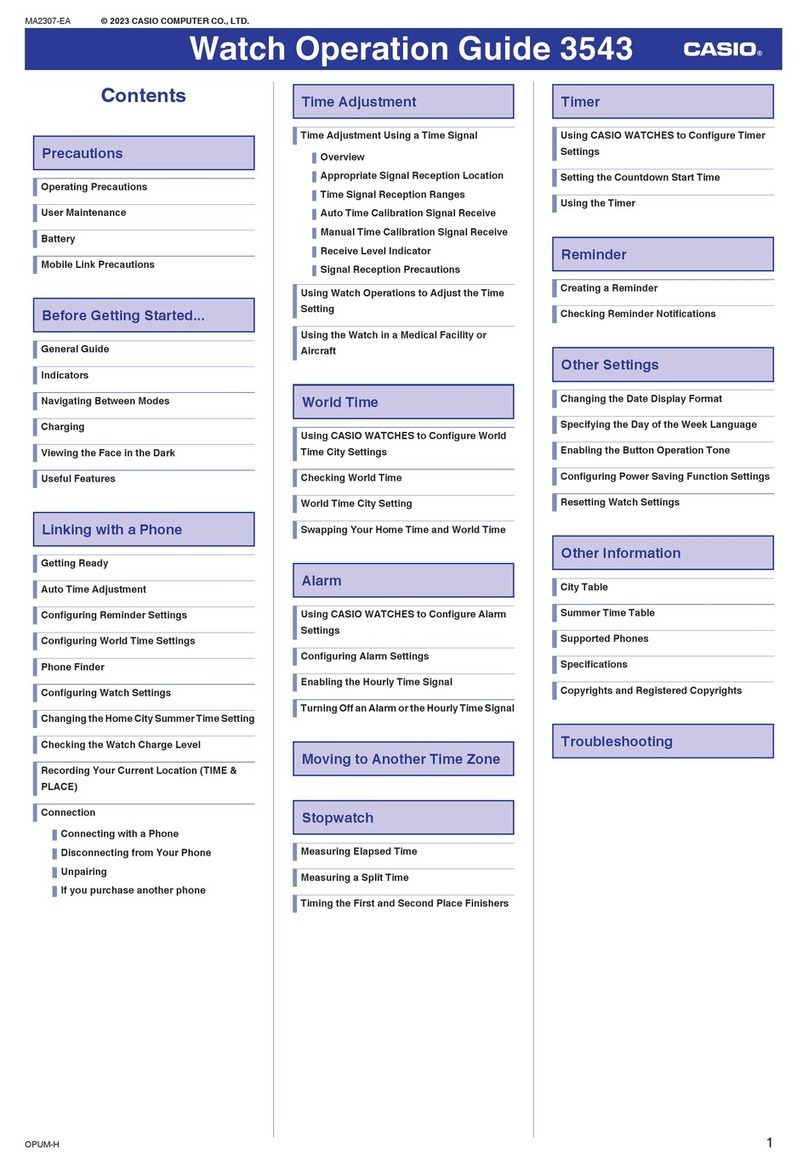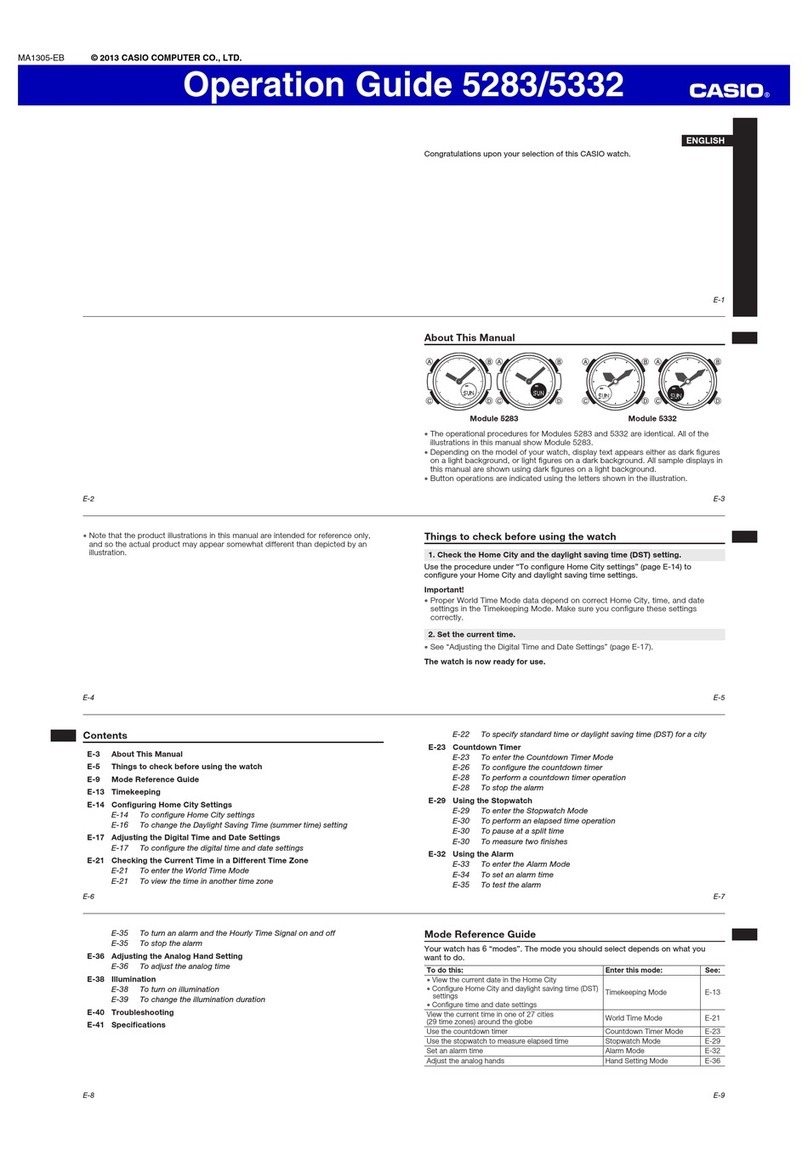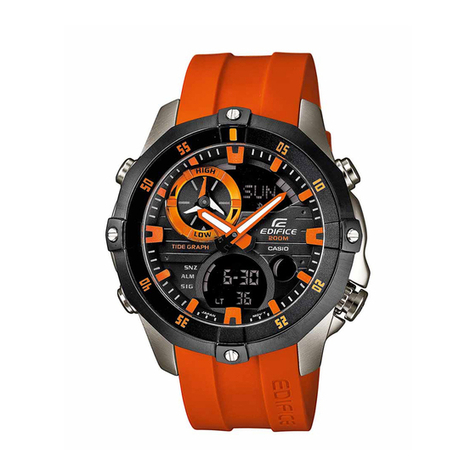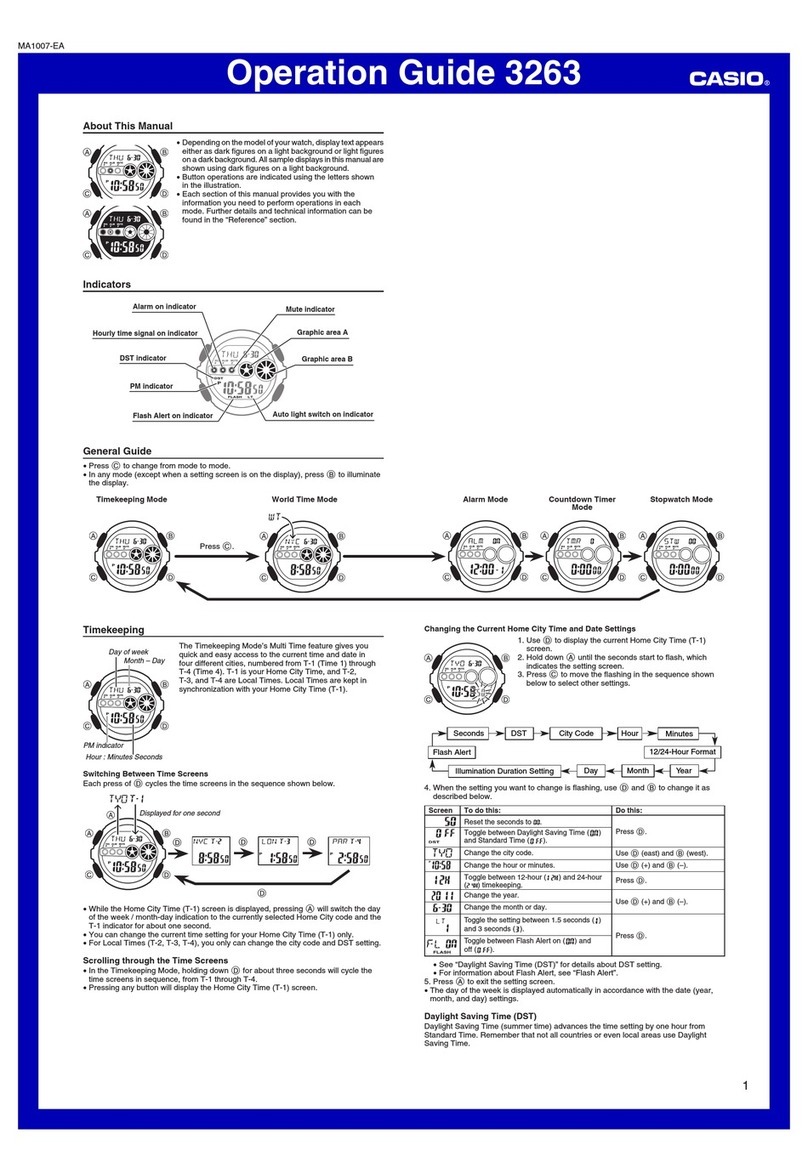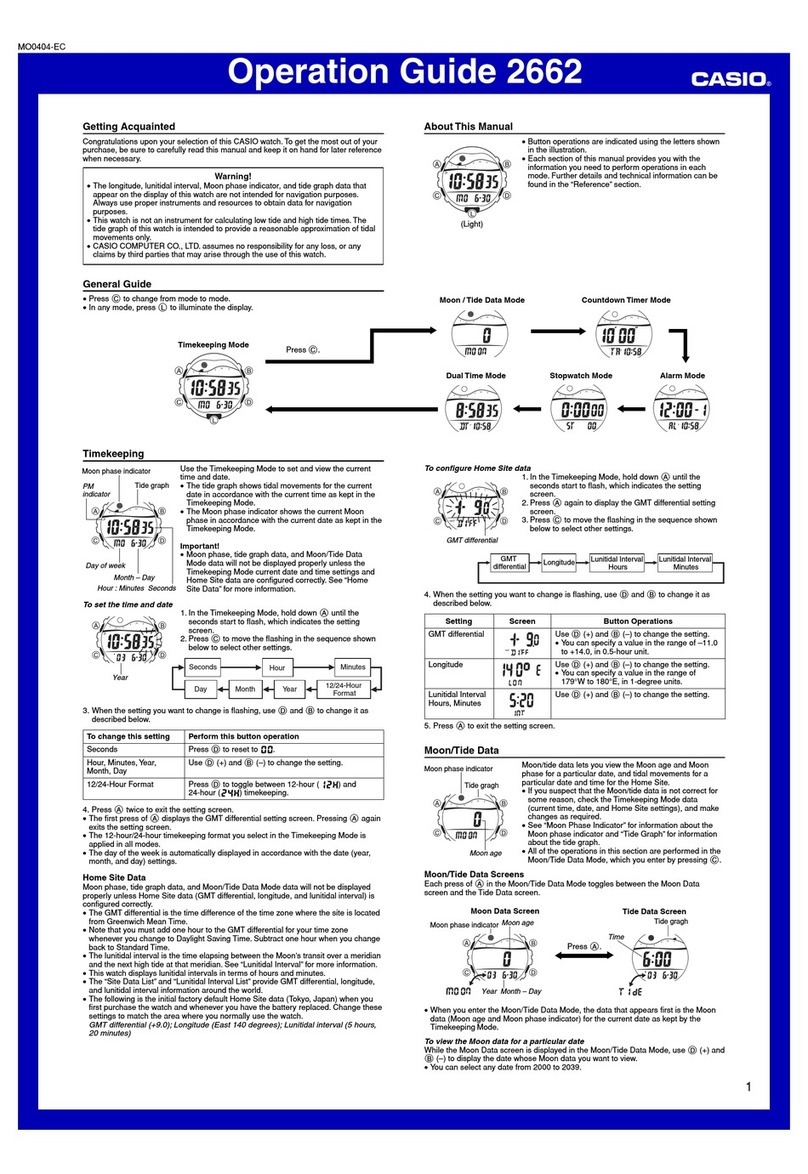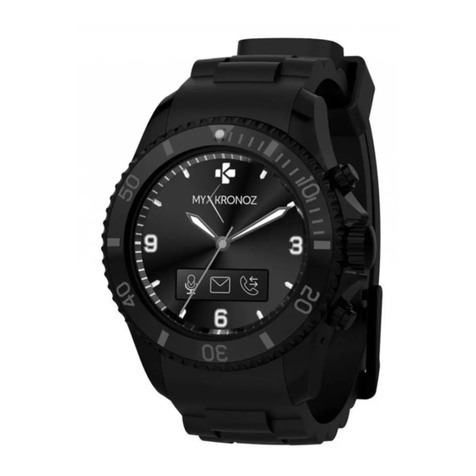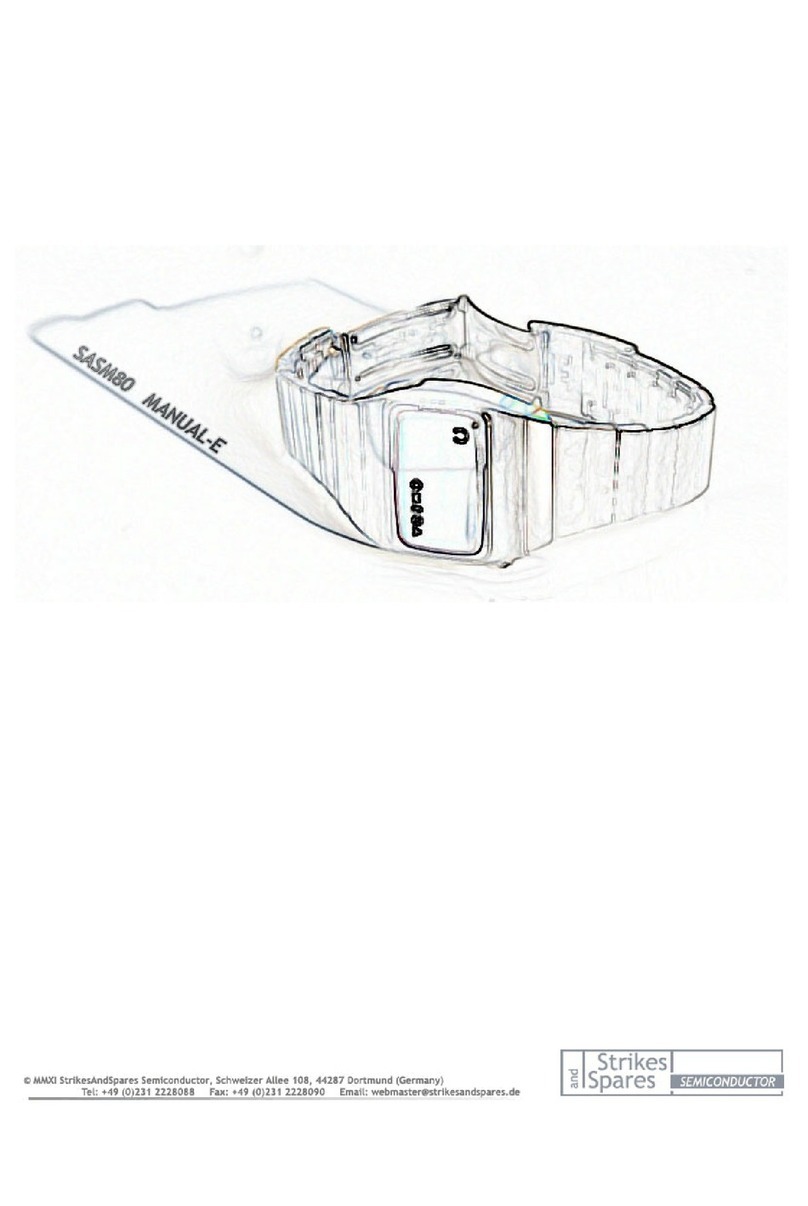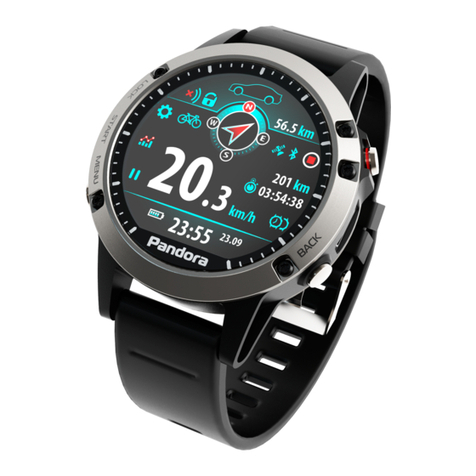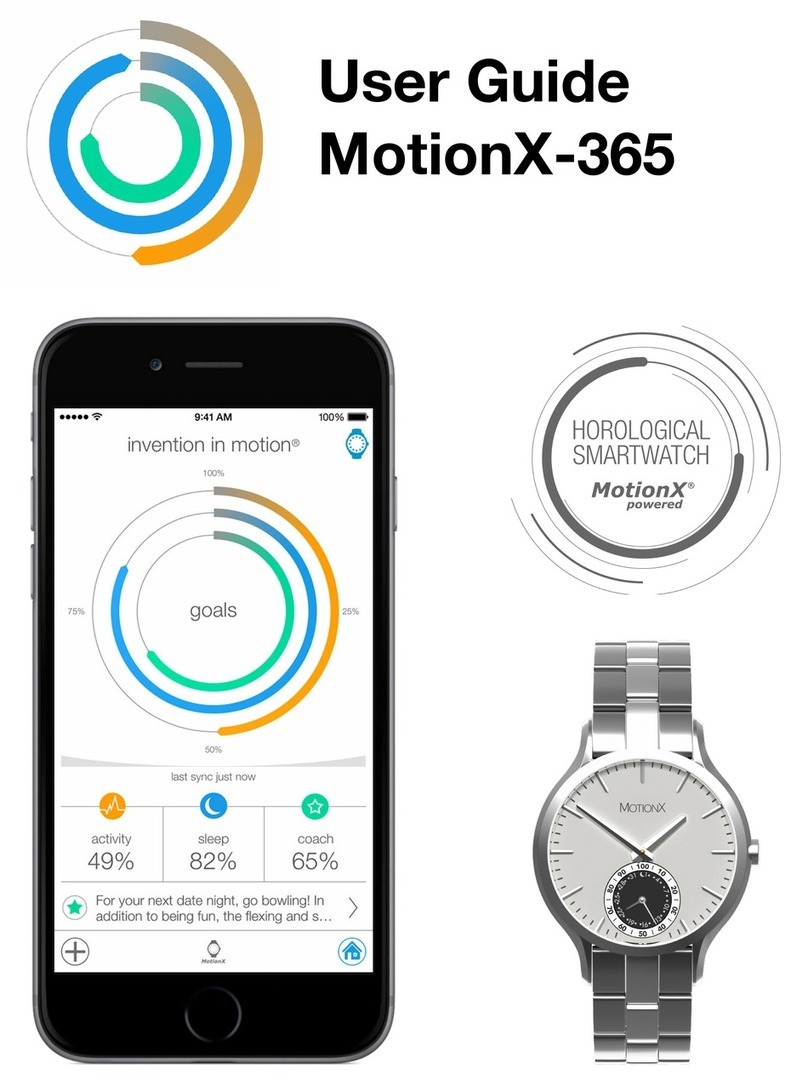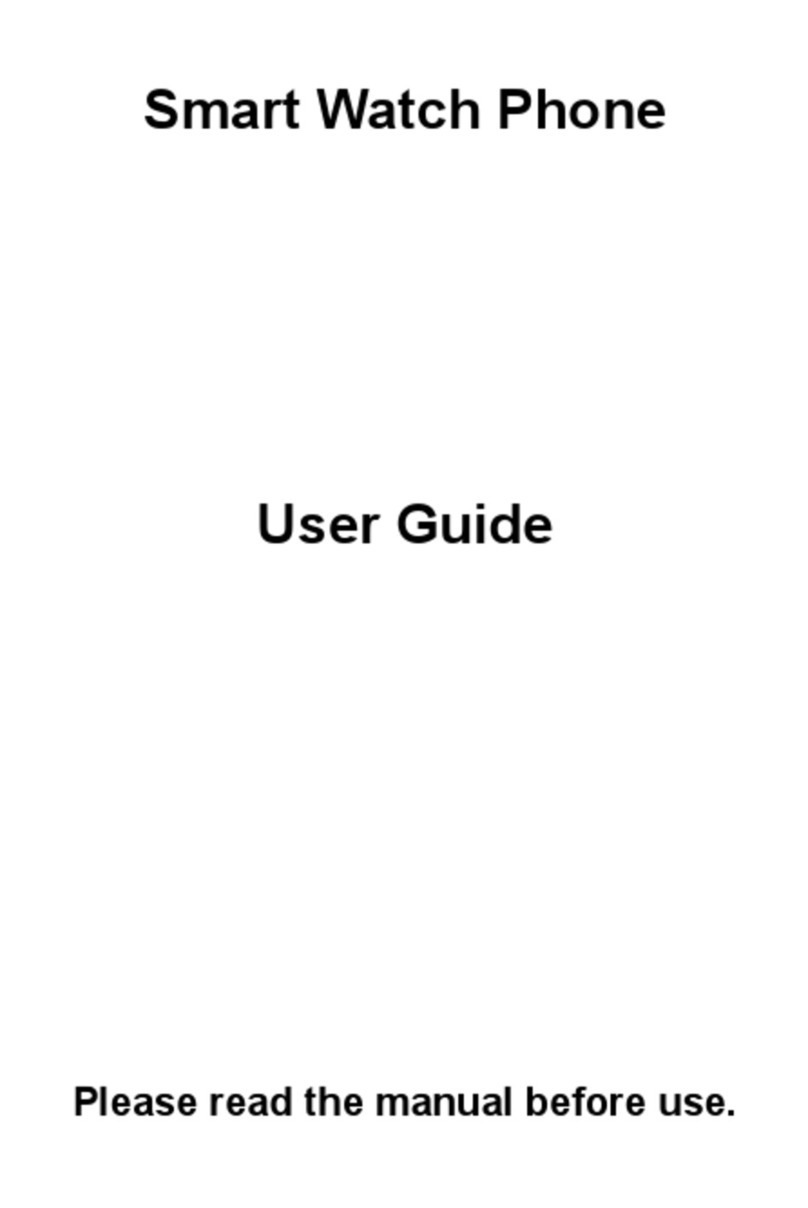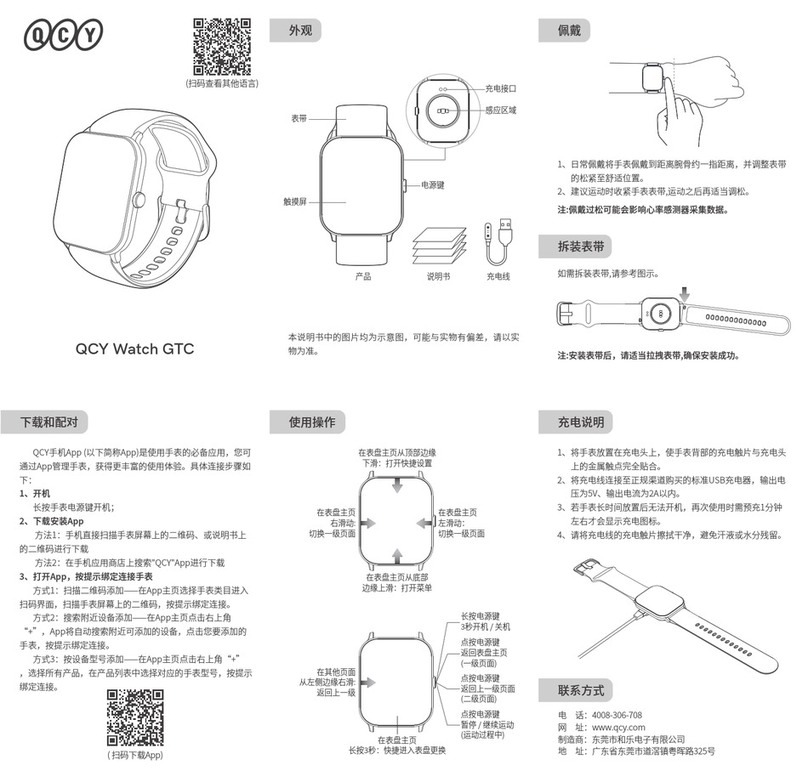
Operation Guide 3507
EN-19
To toggle between 12-hour and 24-hour timekeeping
In the Timekeeping Mode, press Dto toggle between 12-hour timekeeping and
24-hour timekeeping.
xWith the 12-hour format, the P(PM) indicator appears to the left of the hour digits
for times in the range of noon to 11:59 p.m. and the A(AM) indicator appears to
the left of the hour digits for times in the range of midnight to 11:59 a.m.
xWith the 24-hour format, times are displayed in the range of 0:00 to 23:59, without
any indicator.
xThe 12-hour/24-hour timekeeping format you select in the Timekeeping Mode is
applied in all other modes.
xThe Aand Pindicators are not displayed with the Timekeeping Mode time on the
Timer Mode and Dual Time Mode screens.
EN-18
4. When the setting you want to change is flashing, use Band Dto change it as
described below.
Setting Screen Button Operations
UTC Differential
Use B(–) and D(+) to change the setting.
xYou can specify a value in the range of –12.0 to
+14.0, in 0.5-hour units.
Longitude Value
Use B(–) and D(+) to change the setting.
xYou can specify a value in the range of 0° to 180°,
in 1-degree units.
East Longitude/
West Longitude
Use Dto switch between east longitude (E) and
west longitude (W).
Lunitidal Interval Hours,
Minutes Use B(–) and D(+) to change the setting.
xWhen the DST setting is on, the UTC differential can be set in a range of –11.0
to +15.0 in 0.5-hour units.
5. Press Ato exit the setting screen.
EN-17
To configure Home Site data
1. In the Timekeeping Mode, hold down Auntil the
seconds start to flash, which indicates the setting
screen.
2. Press Aagain to display the UTC differential setting
screen.
3. Press Cto move the flashing in the sequence shown
below to select other settings.
UTC Differential East Longitude/
West Longitude
Longitude Value
C
CC
C
Lunitidal Interval Minutes Lunitidal Interval Hours
C
UTC differential
EN-16
xThe following is the initial factory default Home Site data (Tokyo, Japan) when you
first purchase the watch, and whenever you have the battery replaced. Change
these settings to match the area where you normally use the watch.
UTC differential (+9.0); Longitude (East 140 degrees); Lunitidal interval (5 hours,
20 minutes)
EN-15
Home Site Data
Moon phase, tide graph data, and Moon/Tide Data Mode data will not be displayed
properly unless Home Site data (UTC differential, longitude, and lunitidal interval) is
configured correctly.
xThe UTC differential is a value that indicates the time difference between a
reference point in Greenwich, England and the time zone where a city is located.
xThe letters “UTC” is the abbreviation for “Coordinated Universal Time”, which is the
world-wide scientific standard of timekeeping. It is based upon carefully maintained
atomic (cesium) clocks that keep time accurately to within microseconds. Leap
seconds are added or subtracted as necessary to keep UTC in sync with the
Earth’s rotation.
xThe lunitidal interval is the time elapsing between the Moon’s transit over a
meridian and the next high tide at that meridian. See “Lunitidal Interval” (page
EN-45) for more information.
xThis watch displays lunitidal intervals in terms of hours and minutes.
xThe “Site/Lunitidal Interval Data List” at the back of this manual provides UTC
differential and longitude information around the world.
EN-14
To toggle the Timekeeping Mode time between DST and Standard Time
1. In the Timekeeping Mode, hold down Auntil the
seconds start to flash, which indicates the setting
screen.
2. Press Conce to display the DST setting screen.
3. Press Dto toggle between Daylight Saving Time (On
displayed) and Standard Time (OF displayed).
4. Press Atwice to exit the setting screen.
xThe DST indicator appears on the Timekeeping,
Moon/Tide Data, and Alarm Mode screens to indicate
that Daylight Saving Time is turned on. In the case of
the Moon/Tide Data Mode, the DST indicator appears
on the tide data screen only.
DST indicator
On/Off status
EN-13
4. Press Atwice to exit the setting screen.
xThe first press of Adisplays the UTC differential setting screen. Pressing A
again exits the setting screen.
xSee “Daylight Saving Time (DST) Setting” below for details about the DST
setting.
xThe day of the week is displayed automatically in accordance with the date
(year, month, and day) settings.
Daylight Saving Time (DST) Setting
Daylight Saving Time (summer time) advances the time setting by one hour from
Standard Time. Remember that not all countries or even local areas use Daylight
Saving Time.
EN-12
3. When the setting you want to change is flashing, use Band Dto change it as
described below.
Screen To do this: Do this:
Reset the seconds to 00 Press D.
Toggle between Daylight Saving Time (On) and
Standard Time (OF)Press D.
Change the hour or minutes
Use B(–) and D(+).
Change the year
Change the month or day
EN-11
To set the time and date
1. In the Timekeeping Mode, hold down Auntil the
seconds start to flash, which indicates the setting
screen.
2. Press Cto move the flashing in the sequence shown
below to select the other settings.
Seconds MinutesHourDST
Day YearMonth
CC
CC
CC
C
EN-10
Timekeeping
Use the Timekeeping Mode to set and view the current
time and date.
xThe Moon phase indicator (page EN-42) shows the
current Moon phase in accordance with the current
date as kept in the Timekeeping Mode.
xThe tide graph (page EN-44) shows tidal movements for
the current date in accordance with the current time as
kept in the Timekeeping Mode.
Important!
xBe sure to configure the current time and date, and
your Home Site data (data for the site where you use
the watch) correctly before using the functions of this
watch. See “Home Site Data” (page EN-15) for more
information.
PM indicator
Month – Day
Day of week
Moon phase indicator
Seconds
Hour : Minutes
Tide graph
